The evolution of the workstation: how the Asus ZenBook Pro Duo is the future of creativity
Our creative workstations have evolved, from big and bulky desktop PCs with multi-monitor setups, to thin, light and powerful mobile laptops.
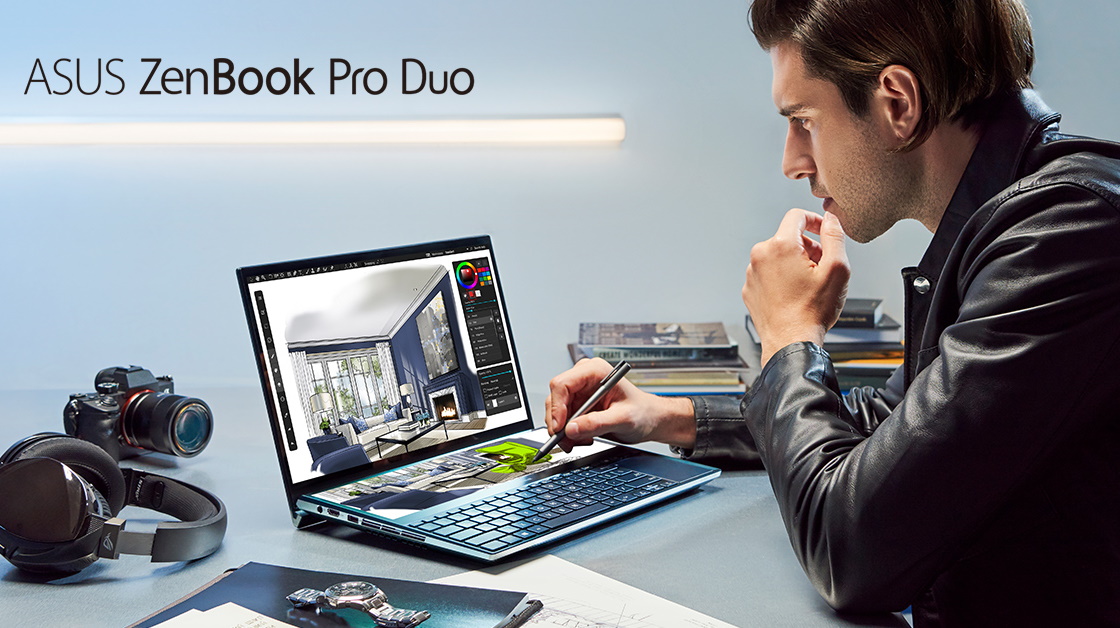
For digital creative, our workstation setups are incredibly important. They help us create our art, and offer the tools and performance we need to work comfortably. But, over the years, these workstations have evolved from big and bulky desktop computers, to thin, light and mobile laptops, like the Asus ZenBook Pro Duo, which give you all the features you need to unleash your creativity without being chained to a desk.
So, let’s look back at the kind of workstations we used to use for our creative work, and how we’ve ended up with a powerful, mobile and feature-packed modern workstation that is the Asus ZenBook Pro Duo.
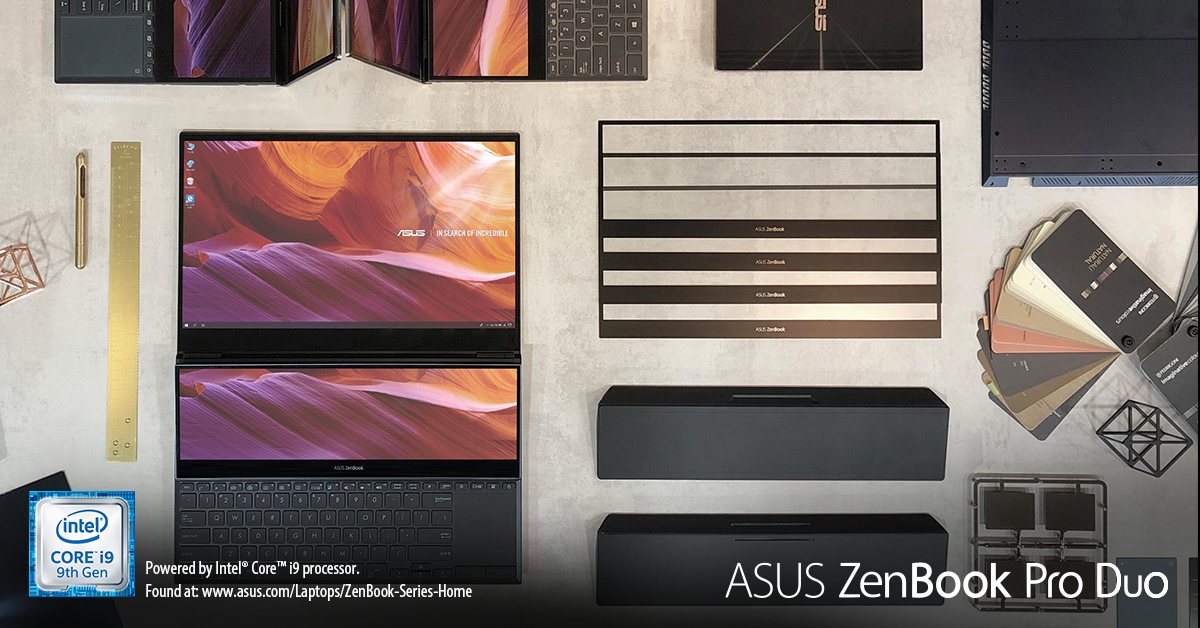
Power and performance
Throughout their history, workstations – especially ones designed for digital creatives – have represented the pinnacle of power. This means they’ve always been packed with some of the most cutting-edge components around – especially when it comes to processor, graphics and RAM.
After all, the more powerful the workstation, the quicker it’s able to complete complex tasks, such as rendering 3D scenes and editing high-definition video.
In the early days of workstations, these powerful PCs were large, power-hungry, devices. They needed large cases to fit in all the hardware, as well as allowing plenty of airflow to keep those powerful components cool. They were also fitted with loads of fans to help with the airflow. While these kept the hardware cool, it also meant they could be pretty noisy with all the fans kicking in at once.
These PCs also needed plenty of electricity to keep everything going, which meant large and heavy PSUs (Power Supply Units), which again added to the size and weight of those older workstations. For anyone who had to move desks or change studios, you’ll remember how difficult these workstation PCs were to shift!
A big workstation revolution happened with the creation of all-in-one PCs. These had their components built into their screens, which meant they are much more convenient. Their designs save you space on your desk, they are easier to move, and there are no ugly wires lying all over your desk.
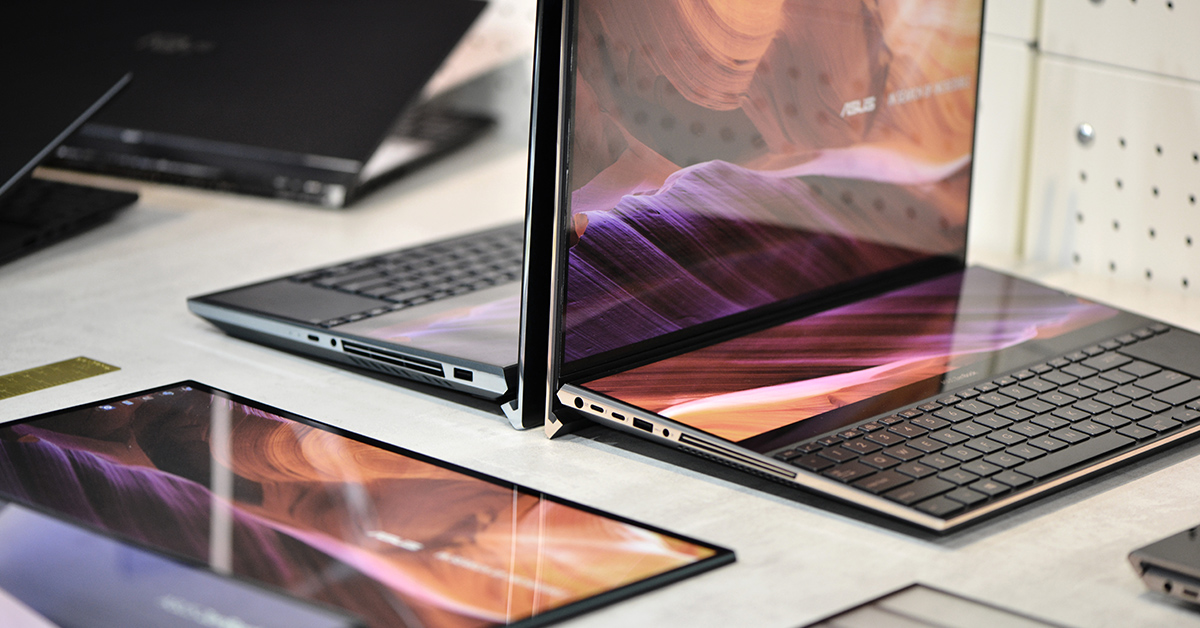
Over the years, all-in-one workstations have become ever more powerful, while also getting slimmer, though they have struggled to match the performance of traditional desktop PCs.
Meanwhile, workstation laptops have also been growing in power, and many of them now can compete with desktop PCs when it comes to power, thanks to the continued evolution of mobile components. They also offer the portability that desktop and all-in-one workstations can only dream of.
The ultimate mobile workstation, the Asus ZenBook Pro Duo, is a perfect example of this. It features a high-end 8-core 9th Generation Intel® Core™ i9 and can come with up to 32GB of RAM, which means it can give even the most powerful of desktop PCs a run for its money.
It also comes with Nvidia GeForce RTX graphics cards, which allows the ZenBook Pro Duo to handle graphically-intensive tasks with ease. Digital artists can also use advanced ray-tracing lighting effects thanks to the GPU.
Intel and Nvidia have both been working hard on getting their mobile components as small as possible, while offering performance that would have been unthinkable only a few years ago. Along with the advanced cooling technology Asus has included in the ZenBook Pro Duo, this is an impressively thin, light and powerful device that means it doesn’t just feel like an evolution of those big and bulky desktop workstations of yesteryear, but an entirely new species altogether.
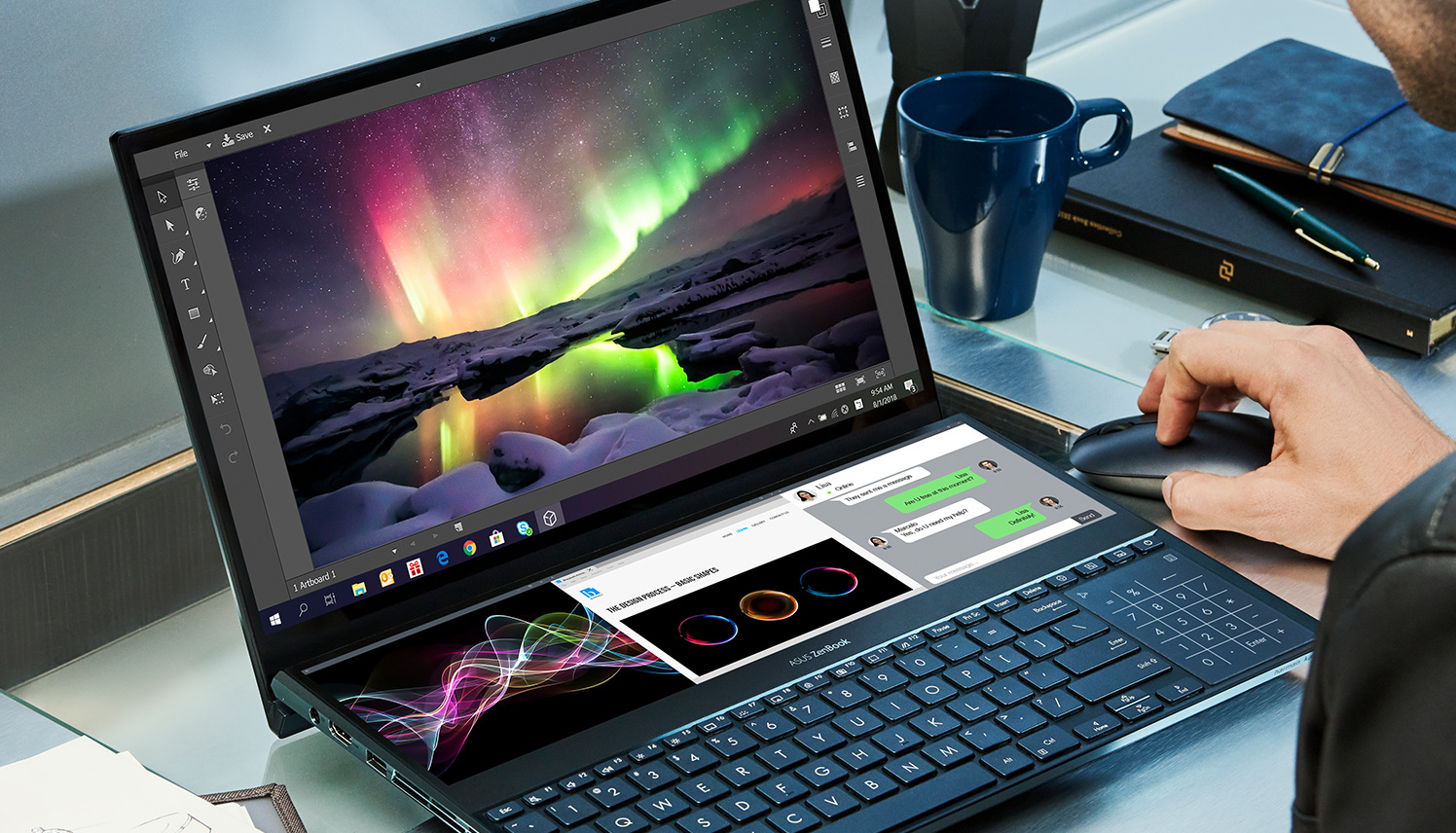
Sight and sound
For most creatives, the workstations they used were only as good as the peripherals they plugged into them. Years ago, this meant having an expensive, professionally-calibrated, monitor for photographers and video editors who needed top-notch image quality and accurate colours.
Meanwhile, if your main creative outlet is music, or working with sounds, then you’d need to plug in professional-grade speakers, so that you can hear your work the way it’s supposed to sound.
These extra peripherals were essential, but they also meant spending more money – and they were yet more devices to cram on top of our increasingly-crowded desks.
Fast-forward to today, and the Asus ZenBook Pro Duo does away with the need for expensive extra monitors and speakers, proving that it’s the ultimate all-in-one workstation.
It features a gorgeous 15.6-inch 4K OLED display that supports 100% DCI-P3 colour space, as well as sRGB. It can handle HDR (High Dynamic Range) content for mind-blowingly vibrant images, and it’s Pantone validated as well. In short, it’s the ultimate screen for creative professionals, and it’s built right into the laptop.
The Asus ZenBook Pro Duo’s no slouch when it comes to audio, either, with Harmon Kardon-certified speakers. The Asus audio team worked with Harmon Kardon to ensure the speakers in the ZenBook Pro Duo sound perfect, with smart amplifier technology that lets you whack up the volume without the sounds distorting, making this the laptop a formidable workstation for musicians and producers.
Extra screen space
It’s hard to believe, but not too long ago, we had to make do with cramped 3:2 aspect ratio monitors with our workstations. These boxy screens didn’t give us much room to work with, especially if you wanted multiple apps open at once.
Thankfully, widescreen 16:9 aspect ratio monitors became more popular throughout the 2000’s, and this extra screen real estate was a blessing for creatives. However, what if you wanted even more space?
Back then, the answer was clear: get another monitor. Hooking up two (or more) screens to your workstation is a revelation when it comes to productivity, as you’re able to have multiple windows open with ease, allowing you to quickly switch between the apps and tools you need.
Extra screens come at a price, though, and we’re not just talking financially. The more screens you have plugged into a workstation, the more crowded your desk becomes.
The Asus ZenBook Pro Duo is a unique workstation laptop because it actually comes with two screens built-in. Not only does it have that gorgeous 15.6-inch 4K screen up top, but there’s a second 14-inch 4K touch display, known as the Screenpad Plus, above the keyboard.
By dragging apps and windows down to the second screen, you instantly free up the main screen so you have even more space to work with. The Screenpad Plus can also hold tools and menus from your creative apps, giving you quick and easy access to the features you use the most.
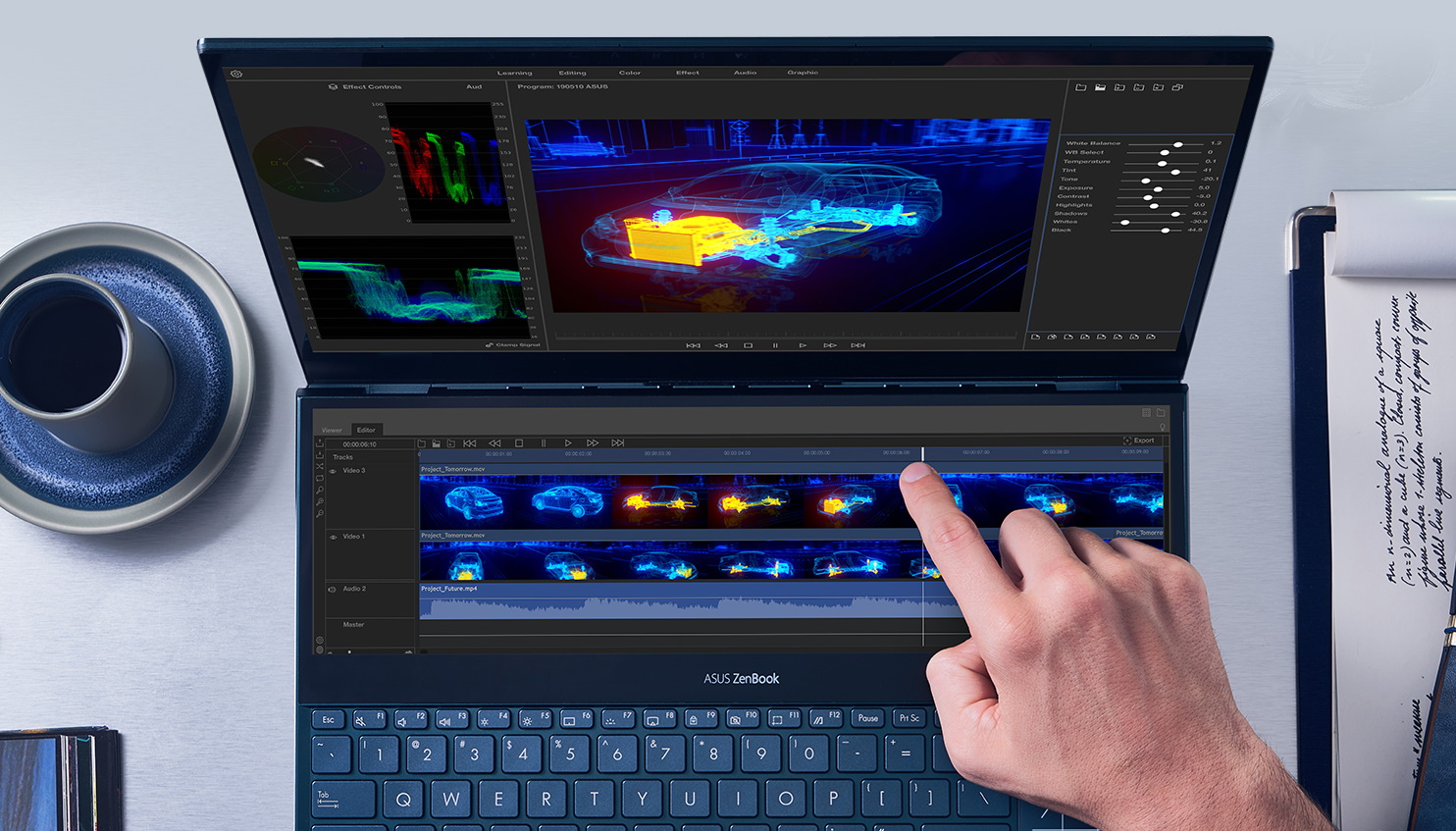
Drawing tablets and digital canvases
For digital artists, a workstation wasn’t complete without a drawing tablet hooked up to it. These devices allow you to draw with a stylus, and your pen-and-brush strokes will appear onscreen in the creative app of your choice.
They are the ideal tool for anyone who wants to make the move from traditional drawing and painting to digital art. Drawing tablets aren’t just for drawing on, either; they let you write and annotate digitally as well, making them perfect for note taking.
They’re great devices but – you’ve guessed it – they are also an additional gadget that can take up room on your desk.
Modern workstations have evolved to include touchscreens that allow you to draw or write directly into your favourite apps, either using your finger or a stylus.
Meanwhile, the ZenBook Pro Duo takes this even further. Not only is its main 15.6-inch screen a touchscreen, but so too is the Screenpad Plus. With the Screenpad Plus located on the bottom of the laptop, above the keyboard, it can be used like a drawing tablet, and it’s incredibly comfortable – and convenient – to use.
Once again, the Asus ZenBook Pro Duo proves it’s the ultimate creative workstation by learning from the past and looking to the future.
Daily design news, reviews, how-tos and more, as picked by the editors.

The Creative Bloq team is made up of a group of art and design enthusiasts, and has changed and evolved since Creative Bloq began back in 2012. The current website team consists of eight full-time members of staff: Editor Georgia Coggan, Deputy Editor Rosie Hilder, Ecommerce Editor Beren Neale, Senior News Editor Daniel Piper, Editor, Digital Art and 3D Ian Dean, Tech Reviews Editor Erlingur Einarsson, Ecommerce Writer Beth Nicholls and Staff Writer Natalie Fear, as well as a roster of freelancers from around the world. The ImagineFX magazine team also pitch in, ensuring that content from leading digital art publication ImagineFX is represented on Creative Bloq.
